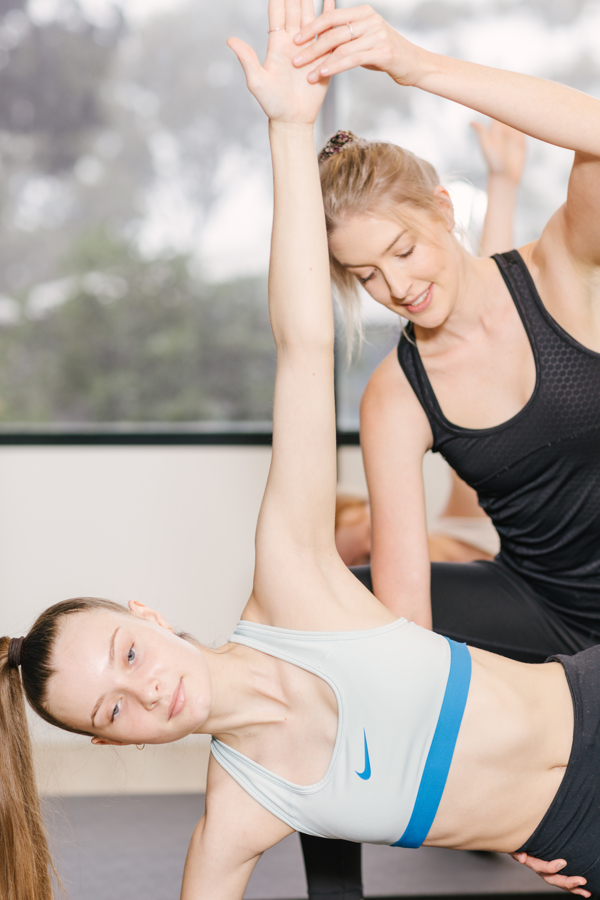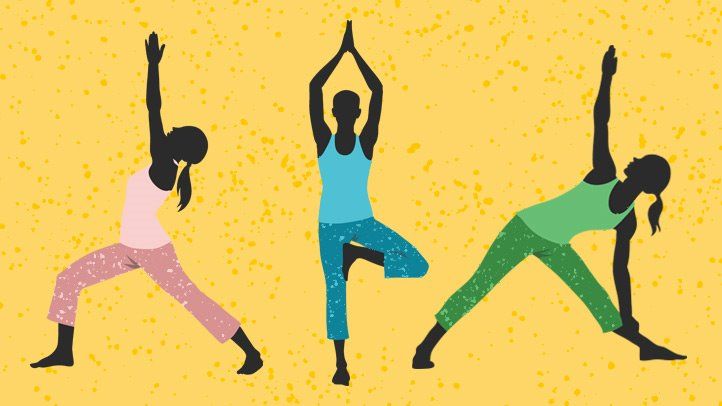
Yoga can be tailored to improve the function and decrease pain in arthritis-prone knees. This is due to improved joint function and biomechanics. No matter what age or physical condition you are, the poses can be beneficial to anyone. They can also improve joint flexibility. These yoga poses are great for arthritis-prone knees. Listed below are some of the most common types of arthritic knees.
One of the many benefits of yoga is its ability to help with pain management by increasing awareness of your breath. It also helps to develop strength and flexibility. Additionally, a person with osteoarthritis must pay attention to their bodies, and yoga can provide an additional perspective to managing symptoms. Research has shown that these techniques can help relieve pain. Yoga may not be suitable for all people with osteoarthritis.

This helps align the body and relieves knee pain. It also strengthens the calf muscles and hamstring muscles. It can lower blood pressure, regulate metabolic regulation, and even help with weight loss. It is becoming a popular alternative treatment for arthritic joints. Research has not shown consistent results despite its many benefits. Its effects are inconsistent on physical function and pain. Spiritual relaxation is also not a reliable option. There has not been any meta-analysis of yoga's effectiveness for arthritic hips or knees.
As a complementary therapy for arthritic knees, yoga can improve the quality of life and increase the quality of life for those suffering from osteoarthritis. Yoga can provide many benefits to patients with arthritis, according Sharon Kolasinski of the University of Pennsylvania. It is safe and enjoyable, even though it can be challenging for some to exercise regularly.
Setu Bandasana or supported half-moon pose is one of most effective yoga poses to heal arthritic joints. To achieve this pose, your feet should be parallel to the wall. To do this, place your right heel on the block. Bend your right knee. Lift your left leg, and then bend your right leg with your left.

Asanas that are used to treat arthritic joints include those that strengthen the legs, hands and hips. Asanas that are good for osteoarthritic hands focus on restoring the natural position in the fingers and palms. Asanas that strengthen the quadriceps can decrease physical stress on the knee joint. Yoga can also be beneficial for your cardiovascular health. It can also be used as a complementary treatment for those suffering from osteoarthritis.
A tailored yoga program adapted for arthritic knees is a great way to reduce pain and improve leg strength. The exercises can be used by women suffering from osteoarthritis of the knee. Anyone with knee osteoarthritis or other conditions should consult their physician before starting any exercise program. Women with osteoarthritis of the knees may benefit from a yoga program that is specifically tailored for them. This will help reduce pain and increase the strength of their legs.
FAQ
Exercise: Good or bad for immunity?
Exercise is good for your immune systems. Exercise boosts the production of white blood cells, which can fight off infections. Your body also removes toxins. Exercise can help prevent heart disease and cancer. Exercise can help reduce stress.
Exercising too often can cause your immune system to be weaker. Your muscles can become sore if you exercise too much. This can cause inflammation and swelling. Your body then has to produce more antibodies to fight off infection. These extra antibodies can lead to allergies or autoimmune disorders.
So, don't overdo it!
What is the difference between fat and sugar?
Fat can be a source of energy that is obtained from food. Sugar is a sweet, naturally occurring substance in fruits and vegetables. Both fats (and sugars) have the same calories. But fats are twice as calories as sugars.
The body stores fats and they can lead to obesity. They may cause cholesterol buildup and lead to strokes or heart attacks.
Sugars are quickly absorbed and provide instant energy. This causes blood glucose levels to rise. High blood glucose levels can pose a danger because they increase the chance of developing type II Diabetes.
What is the difference between calories and kilocalories in food?
Calories measure the energy content of food. Calories is the unit of measurement. One calorie represents the energy required to raise one gram of water's temperature by one degree Celsius.
Kilocalories are another way to describe calories. Kilocalories are expressed in thousandths (or a calorie). 1000 calories equals 1 kilocalorie.
Statistics
- WHO recommends consuming less than 5% of total energy intake for additional health benefits. (who.int)
- In both adults and children, the intake of free sugars should be reduced to less than 10% of total energy intake. (who.int)
- nutrients.[17]X Research sourceWhole grains to try include: 100% whole wheat pasta and bread, brown rice, whole grain oats, farro, millet, quinoa, and barley. (wikihow.com)
- This article received 11 testimonials and 86% of readers who voted found it helpful, earning it our reader-approved status. (wikihow.com)
External Links
How To
What does the meaning of "vitamin?"
Vitamins are organic substances found naturally in food. Vitamins allow us to absorb nutrients from food. The body cannot make vitamins; therefore, they must be obtained from food.
There are two types vitamins: water soluble or fat soluble. Water soluble vitamins dissolve easily in water. Examples include vitamin C,B1 (thiamine), B2 (riboflavin), B3 (niacin), B6 (pyridoxine), folic acid, biotin, pantothenic acid, and choline. Fat soluble vitamins are stored in the liver and fatty tissue. These include vitamin D, E and K, as well as beta carotene.
Vitamins can be classified according to biological activity. There are eight major categories of vitamins.
-
A - Essential for healthy growth and health maintenance.
-
C - vital for proper nerve function, and energy production.
-
D – Essential for healthy teeth, bones and joints
-
E is necessary for good vision, reproduction.
-
K - Essential for healthy muscles and nerves.
-
P - Essential for strong bones and teeth.
-
Q - aids digestion, absorption and absorption iron
-
R – Required for the formation of red blood vessels.
The recommended daily allowance (RDA), for vitamins, varies depending upon age, gender, or physical condition. The U.S. Food and Drug Administration has established the RDA values.
For adults aged 19 and older, the RDA for vitamin B is 400 micrograms daily. Because it is essential for the development of the fetus, pregnant women should consume 600 micrograms per daily. Children ages 1-8 require 900 micrograms per day. Infants below one year old require 700mg per day. But, between 9 months to 12 months, the amount drops to 500mg per day.
Children aged 1-18 years need 800 micrograms daily, while children overweight require 1000 micrograms per days. Children who are severely obese or underweight will need 1200 micrograms each day.
Children between 4 and 8 years old with anemia will need 2200 micrograms daily of vitamin C.
2000 micrograms daily is required for adults over 50 to maintain their general health. Due to their increased nutrient needs, pregnant and breastfeeding women need 3000 micrograms daily.
1500 micrograms is the recommended daily intake for adults aged 70+, who lose approximately 10% of muscle each year.
Women who are pregnant or lactating need more than the RDA. Pregnant women require 4000 micrograms daily during pregnancy, and 2500 micrograms every day after birth. Breastfeeding moms need 5000 micrograms each day when breastmilk production occurs.